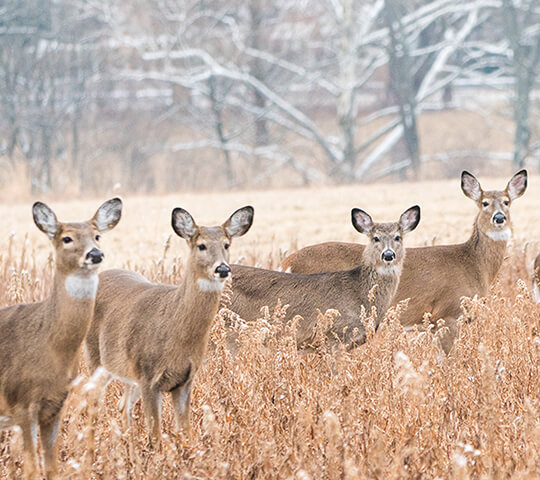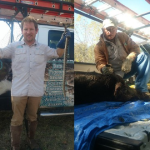While deer are beloved animals, they also pose a significant hazard. When they find themselves at risk, deer can kick with their legs, sometimes causing serious injury to animals or humans. And when does are nurturing their young in late spring and summer, they can exhibit aggressive behavior toward perceived threats. In addition, deer can be highly destructive to gardens and landscapes.
Deer are elegant creatures known for their grace and beautiful antlers. These herbivores roam both wild terrains and urban settings, often admired from a distance. However, when they venture too close to homes and businesses, they can become a problem.
Appearance
General Characteristics
Deer, members of the Cervidae family, have slender, agile bodies with long, slender legs. Their necks are typically long, leading to a small head with large, alert ears.
Coloration/Patterns/Distinctive Markings
The fur of most deer species is typically a shade of brown, ranging from a reddish-brown in the summer to a more grayish-brown in the winter. White-tailed deer, for instance, have distinctive white undersides and tails.
Size/Features
Size varies depending on the species. The diminutive muntjac can be as small as a large dog, whereas moose, the largest deer species, can stand over 6 feet tall. Most deer species have antlers, which are typically grown by males and used for mating displays and fights.
Biology
Digestion and Diet
Deer are herbivores and have a four-chambered stomach that allows them to digest tough plant fibers. Their diet consists primarily of grasses, herbs, fruits, and in the winter, they might feed on twigs and bark.
Reproduction
Most deer species mate in the fall and give birth in the spring. After a gestation period that varies by species, females generally give birth to one to three fawns, which are usually spotted and camouflaged against predators.
Unique Sensory Systems
Deer have acute senses of hearing and smell, which help them detect predators. Their eyes are located on the sides of their heads, giving them a wide field of vision.
Habitat
Preferred Environments
Deer prefer woodland habitats but can also be found in grasslands and wetlands. Their adaptability has enabled them to thrive in a variety of environments.
Urban Encounters
As urban areas expand into traditional deer habitats, encounters between humans and deer increase. It's not uncommon for deer to be spotted in suburban gardens or even on city streets.
Temperature Regulation
Deer shed and grow their fur based on the season to regulate their body temperature. Their winter fur is denser to keep them warm, while their summer fur is lighter.
Behavior
Defensive Mechanisms
When threatened, deer usually flee to escape predators. Their strong legs allow them to run swiftly. Some male deer might also use their antlers defensively.
Hunting Techniques
Being herbivores, deer don’t hunt. Instead, they graze and browse for food, being most active during dawn and dusk.
Migratory Patterns
Some deer species migrate seasonally in search of food or to escape harsh weather conditions.
Damage/Problems
Diseases
Deer can carry diseases like Lyme disease, transmitted through ticks, which can affect humans and pets.
Grazing
Deer can damage crops and gardens as they graze, which can lead to significant economic losses for farmers or frustrations for homeowners.
Structural Damage
Deer, especially males during rutting season, might damage trees or wooden structures by rubbing their antlers against them.
Trapping & Removal
Safe Handling
Deer are wild animals and can become aggressive if cornered. It's vital to approach them with caution and ideally leave the handling to professionals.
Relocation
When deer become a nuisance, they can be trapped and relocated to a safer, more appropriate environment away from human habitats.
Deterrence or Prevention
Property Maintenance
Keeping your property free from plants that attract deer can help. This includes regularly harvesting fruit trees and protecting garden plants with netting.
Physical Barriers
Fences, especially those at least 8 feet high, can be effective at keeping deer out of specific areas.
Exclusion
Using repellents or installing motion-activated sprinklers can deter deer from venturing too close to your property.
If you're experiencing challenges with deer on your property, call AAAC Wildlife Removal. Our professionals know how to handle, relocate, and deter deer, ensuring your property remains deer-free and undamaged. Don't wait until the problem grows; contact us today!



















































